There are some dogs that can’t stand being alone. Separation anxiety is a real struggle for both pets and their owners. It’s not just about whining when you leave; it can lead to destructive behaviors, constant barking, or even physical symptoms. The truth is, some dogs are naturally more prone to this emotional challenge than others.
If you’re a dog owner, you might already know that some pups seem to get extra clingy or distressed when they’re left by themselves. But did you know that certain types of dogs are more likely to experience these intense feelings of separation anxiety? It’s all about their temperament, attachment style, and instinctual needs.
But don’t worry! With the right training and care, many dogs can learn to feel comfortable being alone. So, what’s the deal with these breeds, and why are they more likely to suffer? Let’s dig into this topic and see what makes them tick.
High Separation Anxiety Dog Breeds
1. German Shepherd
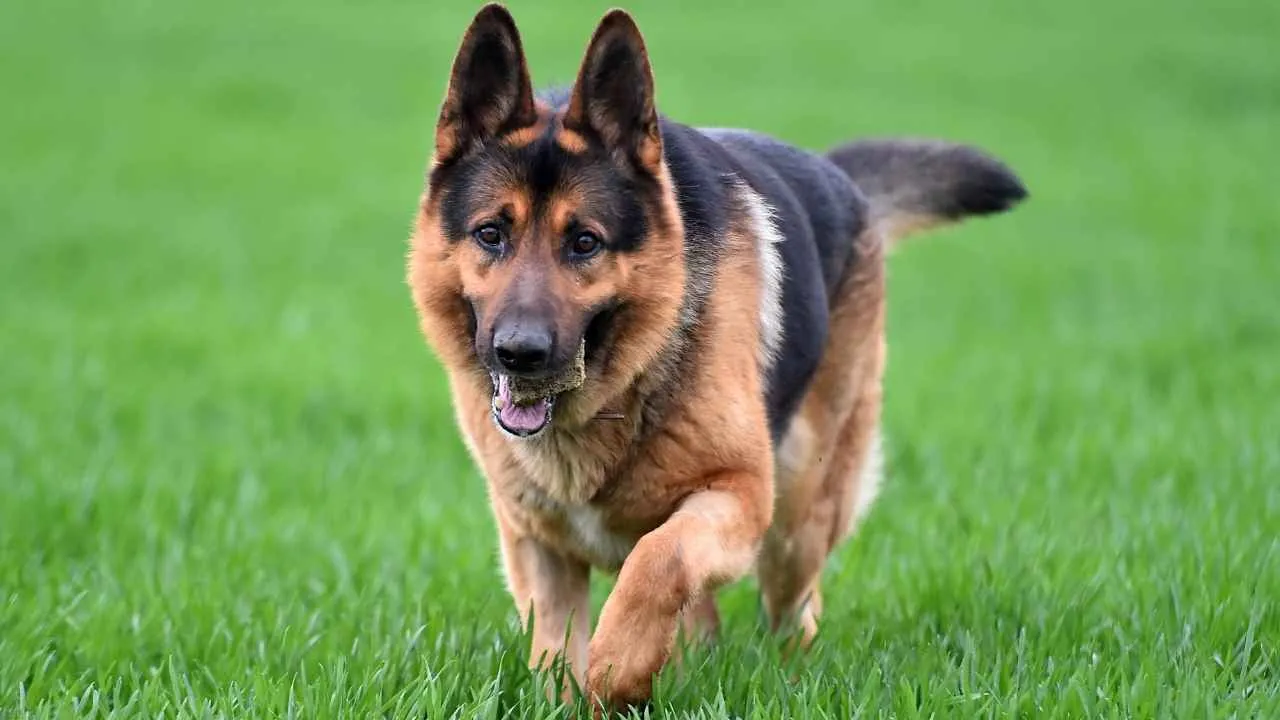
German Shepherds are known for their fierce loyalty and intelligence, but they can also be a breed that struggles with separation anxiety. Why? Well, these dogs are incredibly attached to their owners and have an innate need for constant interaction. When left alone, they can become stressed, anxious, and often destructive.
These dogs thrive on mental stimulation and physical activity, so when left alone, they often become restless. German Shepherds are working dogs by nature, and their high energy levels require consistent engagement. Without that, they can become anxious, barking, or chewing up furniture as a way to express their frustration.
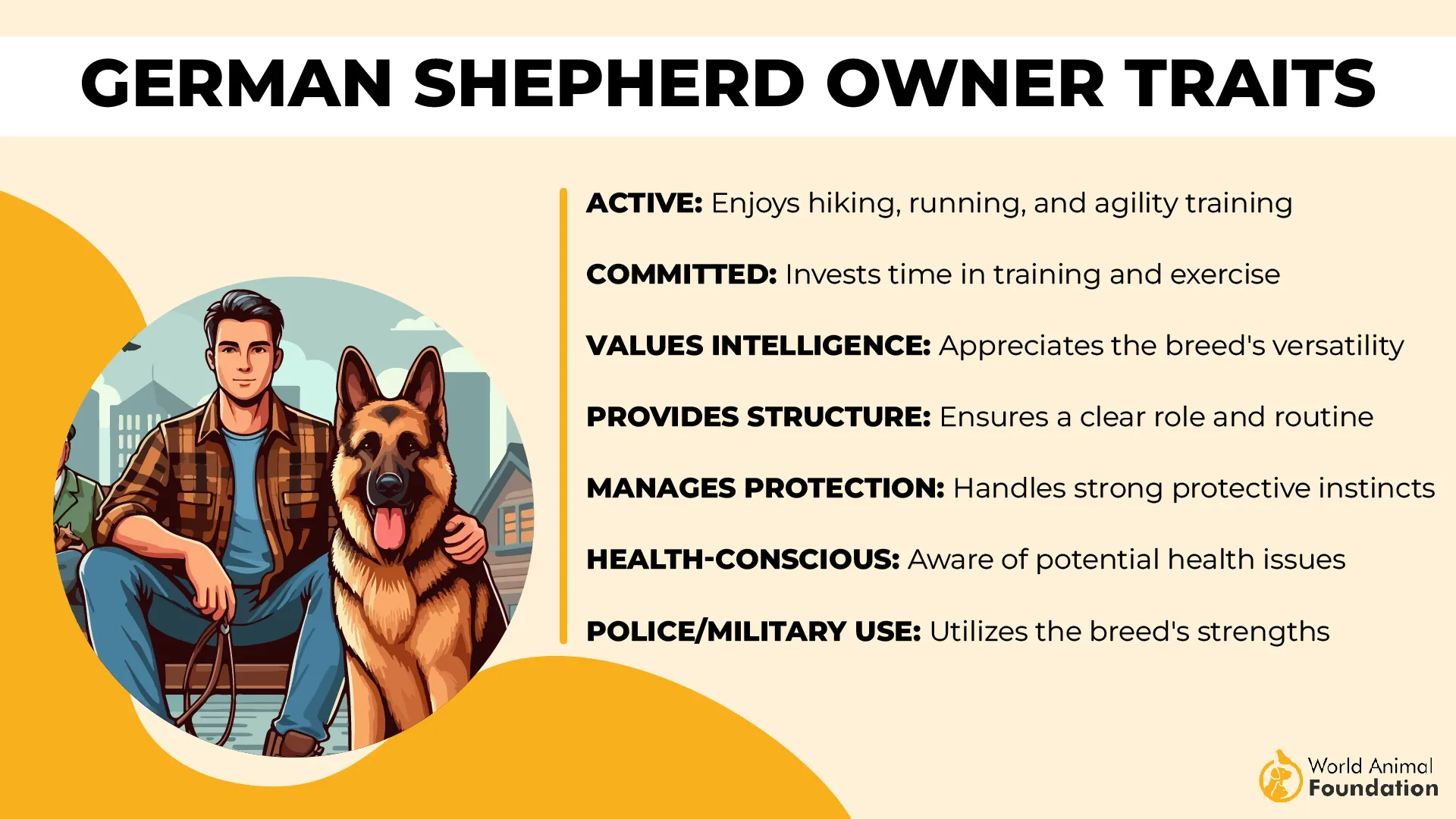
Training and socialization are key with German Shepherds. If you’re thinking about getting one, it’s important to start teaching them to be independent from a young age. This can involve crate training, short periods of separation. This breed thrives on routine, so a consistent schedule can help alleviate their stress.
However, if you’re not giving them enough attention or exercise, this attachment can turn into anxiety. Just like any other dog, they need mental stimulation, so leaving a German Shepherd alone for long periods without a toy or activity can be problematic.
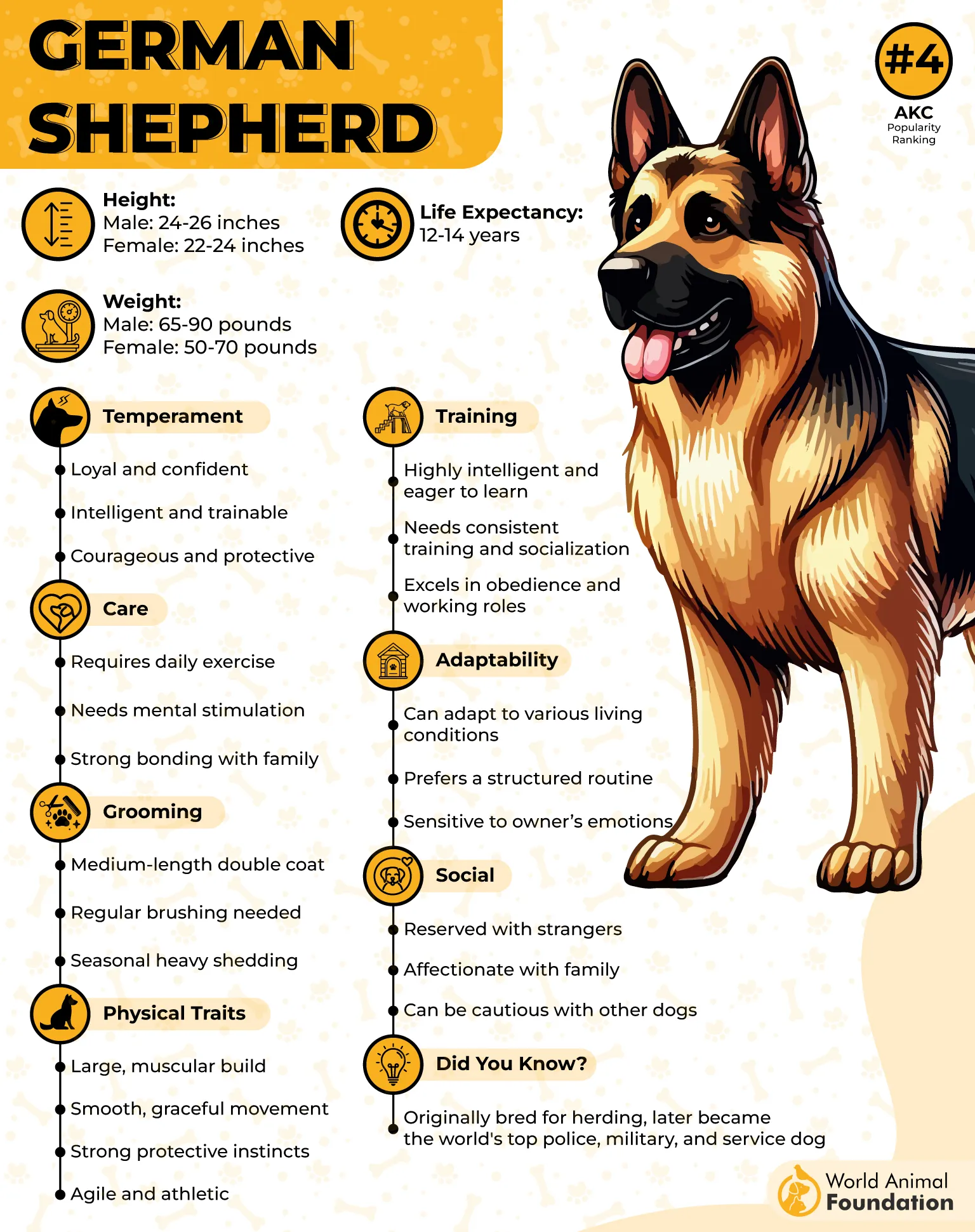
Lastly, remember that German Shepherds are extremely loyal and want to please their owners, says AKC. This strong desire to stay close to you might lead to anxious behaviors, but it also means they’ll be extra motivated to learn ways to cope with being alone. How cool is that?
A fun fact about German Shepherds: These dogs are often used as working dogs in police forces or search and rescue teams. Why? Their drive, intelligence, and strong bond with their humans make them perfect for these demanding roles. But this also means they’re emotionally connected and need to feel secure at home.
2. Jack Russell Terrier

The Jack Russell Terrier might be small, but their attachment to their owners is huge! These little dogs have a massive personality and are known for being lively, energetic, and highly intelligent, according to Hill’s Pet Nutrition. But here’s the catch: they also have a deep emotional connection to their humans, which means separation anxiety can hit them hard. When left alone, their energy doesn’t just disappear—it often turns into anxiety.
This breed thrives on interaction and constant stimulation. They were originally bred for hunting, so they’ve got a lot of drive and determination. When left alone for long periods, their intense energy can transform into destructive behavior.
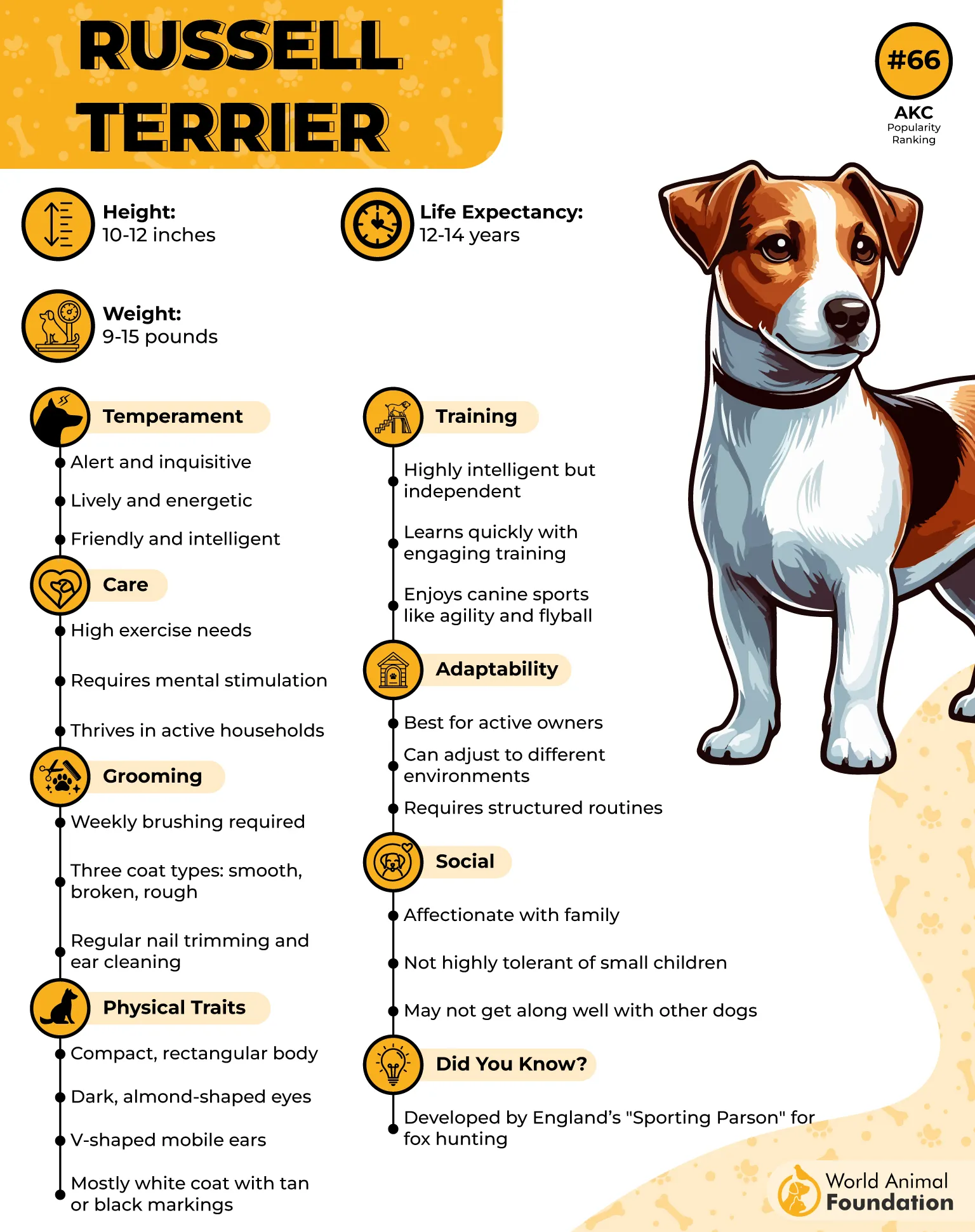
Socialization from an early age can help prevent separation anxiety in Jack Russells. With the right training, you can teach them how to cope with being alone for short periods. The goal is to help them build confidence so they don’t rely on constant companionship to feel secure.
Jack Russells have a strong sense of devotion and can get very attached to their owners. If you’ve ever seen one follow you around from room to room, you know exactly what I mean. Their bond with their humans is so strong that it often leads to separation anxiety when they have to be apart.
What’s really interesting is that Jack Russells can sometimes have trouble with being alone, even when there’s another pet around. Because they’re so people-focused, they might not find comfort in the company of another dog. This makes it even more important to focus on training them to cope with separation from you, their primary source of comfort.
3. Bichon Frise
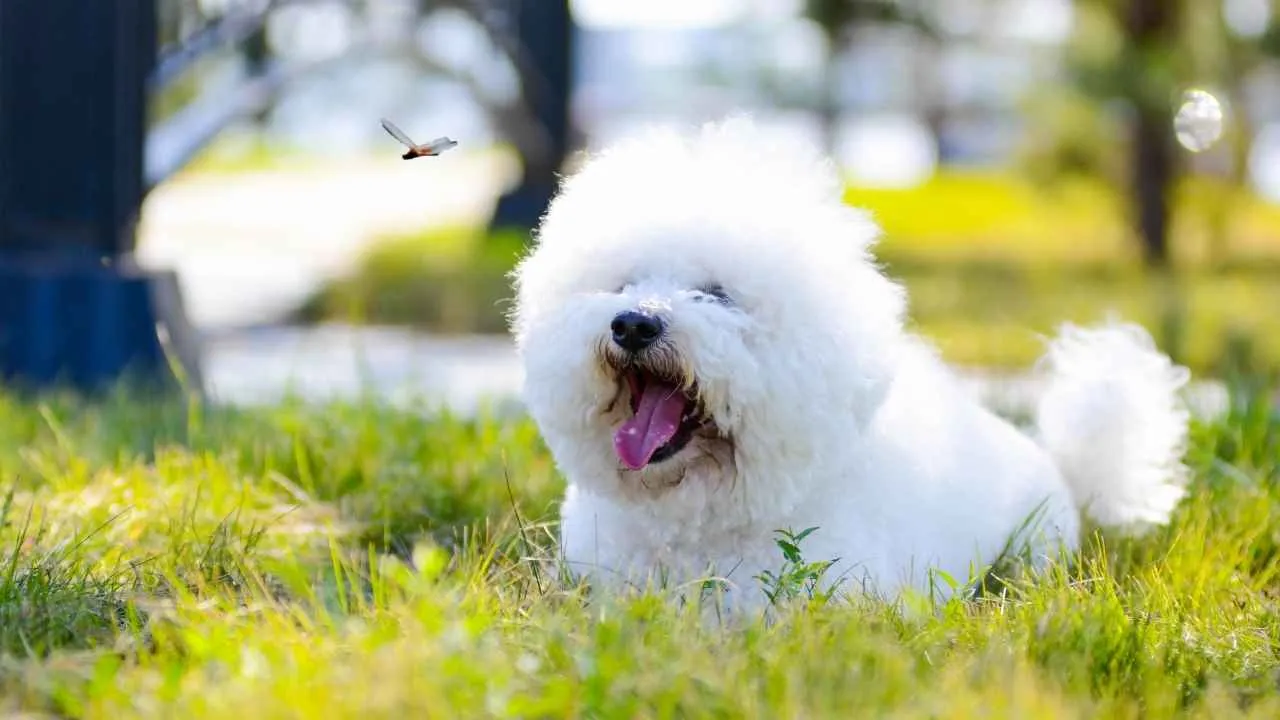
Bichon Frises are often seen as the epitome of a lap dog—small, fluffy, and endlessly affectionate. But these adorable companions also tend to develop anxiety when their human isn’t around. Why? Because they’ve got an enormous attachment to their owners and want to be involved in everything you do.
They were bred to be companion dogs, and they love being around people, forming deep bonds with their families. However, this deep attachment can lead to anxiety when they sense their beloved owner is leaving. Their reaction to separation can range from mild whining to more severe symptoms like excessive barking or destructive chewing. This is one of the playful, gentle, and cheerful breeds, says VCA.
Bichons are also highly sensitive, so they pick up on changes in their environment or routine. If you’ve had a recent change in your schedule, they may start to feel more insecure. This breed thrives on predictability, so sticking to a consistent routine can help ease their anxiety.
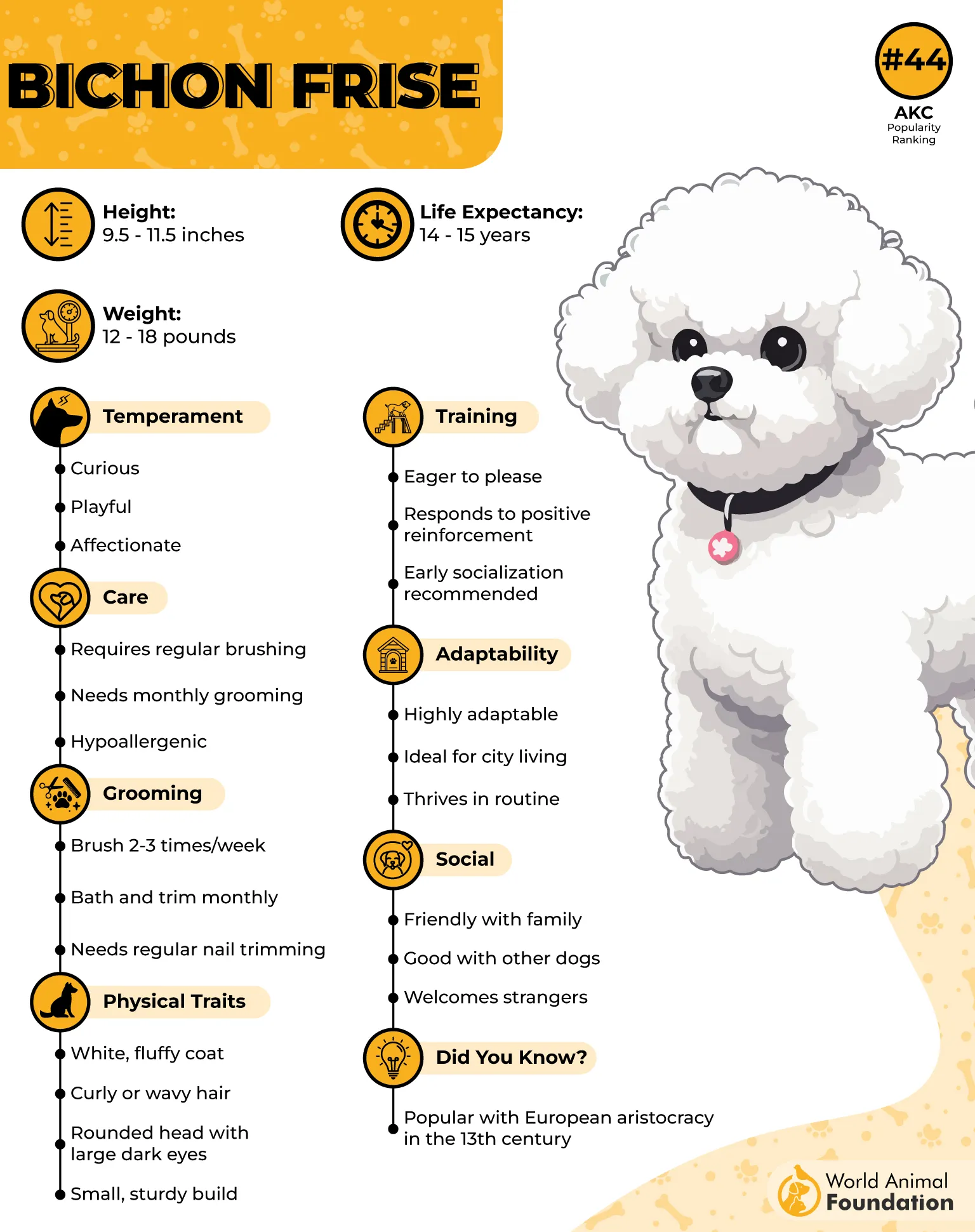
Training and gradual desensitization can really help a Bichon Frise manage separation anxiety. Starting with small periods of alone time and rewarding them when they remain calm is key. This helps them realize that your leaving doesn’t necessarily mean bad things happen—it’s just a temporary situation. They need to feel confident that you’ll come back, and training can help reinforce that.
One thing that’s unique about Bichons is that they tend to get along with almost everyone, including other pets. But even though they enjoy the company of other dogs, they still rely heavily on their human for emotional support. This can sometimes make it harder for them to cope with separation from their owner, even if another dog is around.
4. Cavalier King Charles Spaniel
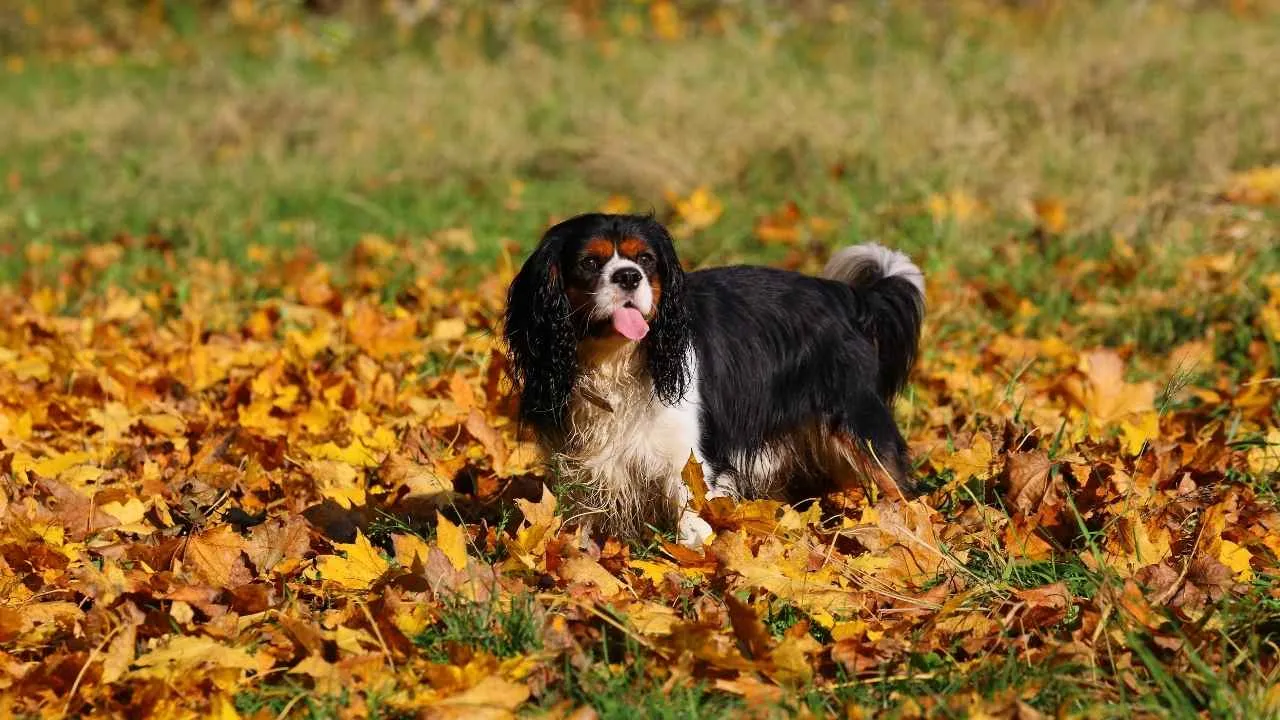
With their soft, silky coats and gentle demeanor, these dogs are naturally affectionate and thrive on being close to their humans. Cavalier owners know that leaving their fluffy friend behind can be a real challenge, as these dogs are extremely sensitive to being alone.
What makes Cavaliers particularly prone to separation anxiety is their history as lap dogs. Developed to sit on the laps of royalty, they’ve always been at the center of human activity and comfort. This desire to be part of the family doesn’t fade when they’re at home. When left alone, they often express distress.
These little dogs are also highly attuned to their owners’ emotions. If you’re feeling stressed or anxious, your Cavalier will often mirror those feelings. They form such strong attachments that they might struggle to cope with even short separations. Leaving them with a comforting toy or blanket might help, but it’s not always a guaranteed solution.
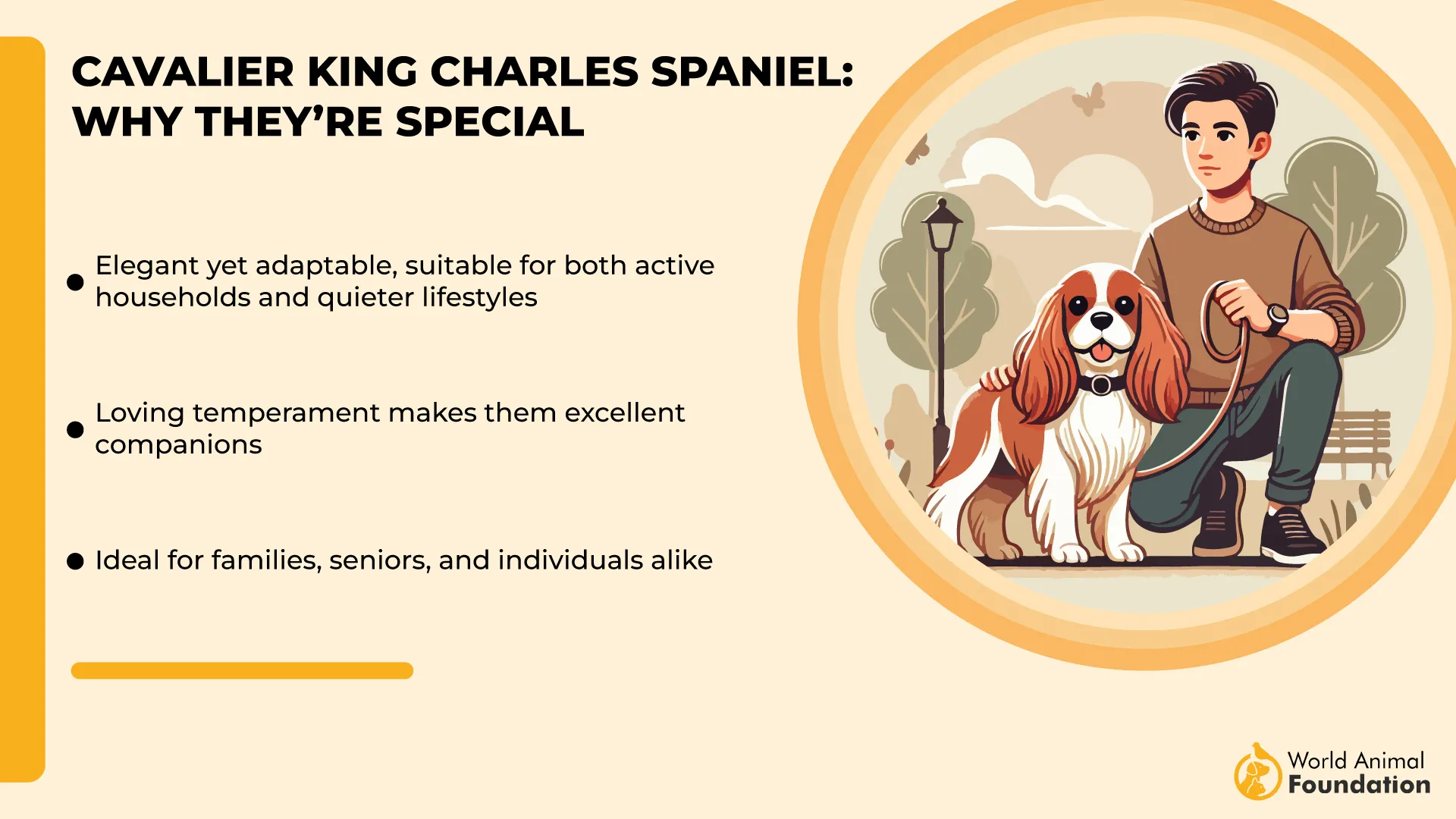
If you’re introducing your Cavalier to alone time, it’s important to take baby steps. Start with brief separations, then gradually increase the duration. Positive reinforcement, such as treats or praise when they remain calm, can go a long way in teaching them that being alone is not a scary experience.
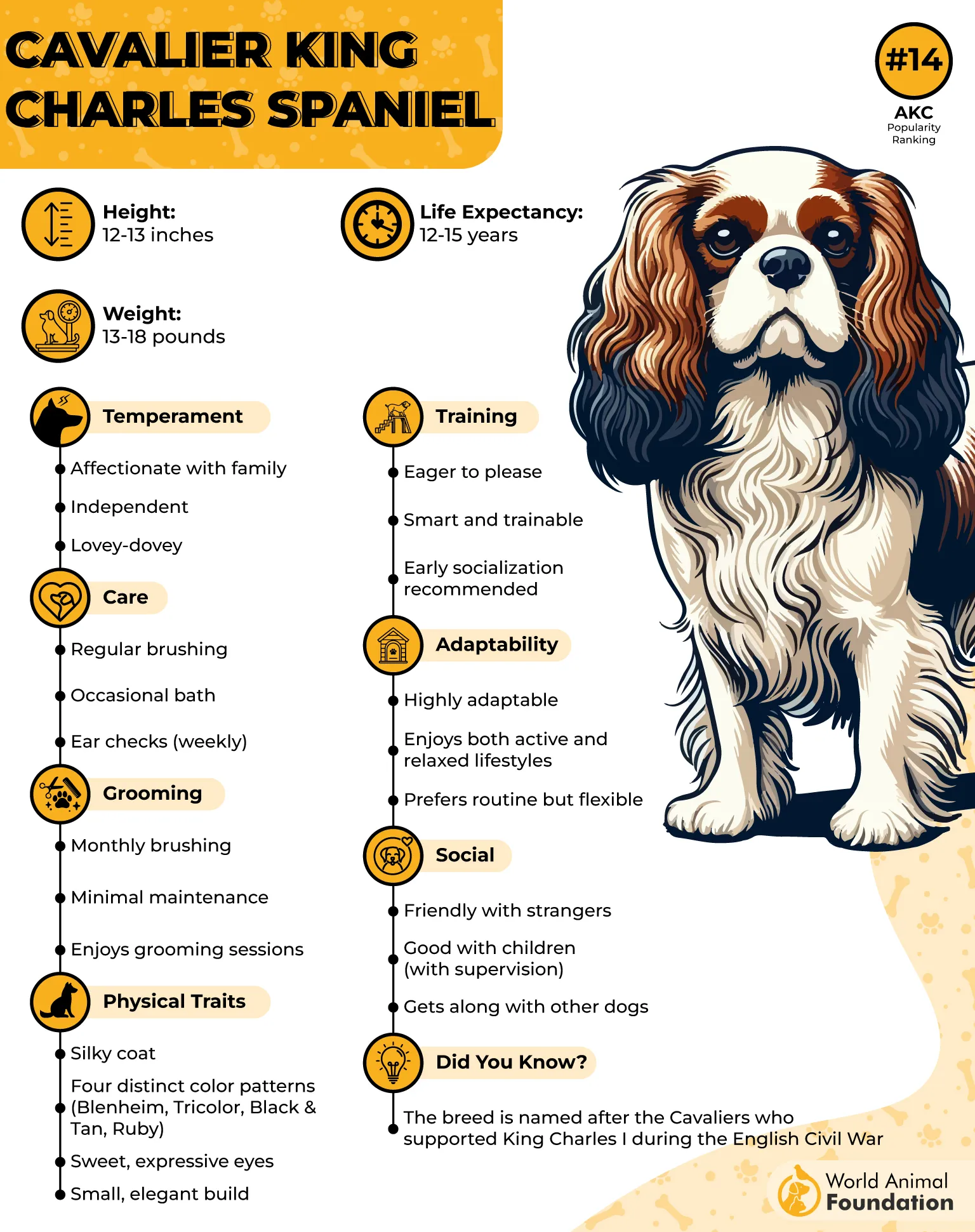
Another fun aspect of Cavaliers is their playful nature, says PDSA. Despite their sweet, laid-back demeanor, they still love to engage in games and interactive activities. Providing mental stimulation, like fetch or puzzle games, can help them focus their energy and keep them content when you’re not around. The key is to tire them out before you leave—because a tired Cavalier is often a calmer one.
5. Border Collie
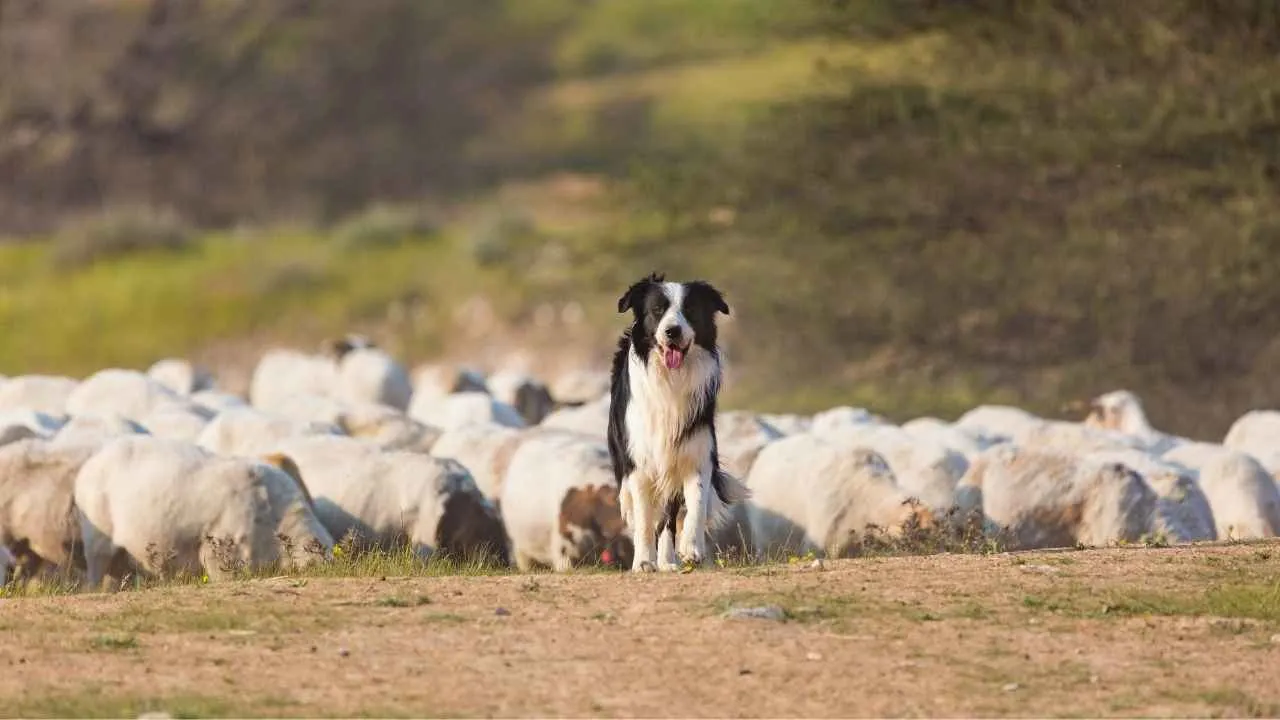
Border Collies are renowned for being one of the most intelligent, smart, and energetic dog breeds out there. But this high energy and brainpower come with a unique set of challenges, especially when it comes to separation anxiety. These dogs are known for their need to constantly be on the move and mentally engaged, and when they’re left alone, that energy can quickly turn into anxiety.
As working dogs, they’re highly social and thrive on interaction. When their human isn’t around, they feel lost and uncertain. Their high intellect means they often figure out what’s going on, like when you’re preparing to leave, and their distress can escalate. Instead of just lying down and waiting, a Border Collie might pace, bark, or try to escape.
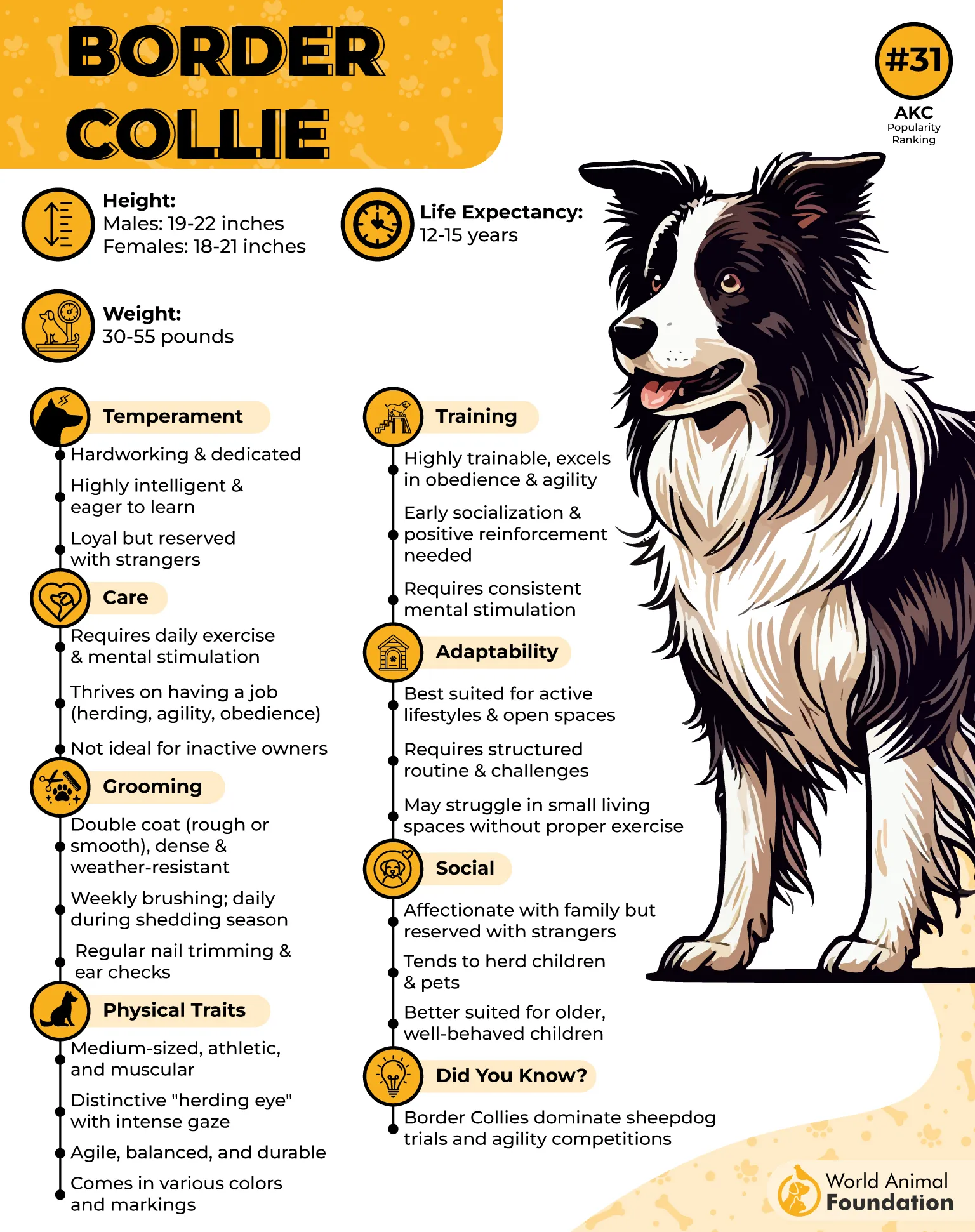
Border Collies also have an innate desire to work, which means they often become anxious if they don’t have something to focus on. Unlike many other dogs that can entertain themselves with toys, a Border Collie needs more—like tasks, challenges, and mental stimulation.
Border Collies form an extreme attachment to their owners, even compared to other breeds. They don’t just want to be near you—they want to know what you’re doing, and they want to be involved. This deep bond can make it hard for them to tolerate being left behind. Some owners find that their Border Collie will follow them everywhere, from room to room, just to stay in close contact.
Another important factor for Border Collies is exercise. If you leave a Border Collie without enough exercise, it’s much more likely to become anxious. A long walk, jog, or even a play session before you head out can make a huge difference. It’s like getting all their wiggles out before you leave—so they can settle into a calmer state while you’re gone.
6. Vizsla

Vizslas are often called “Velcro dogs” because they’re almost always glued to their owner’s side. Their deep affection for their humans is one of the reasons they’re so prone to separation anxiety. These dogs are incredibly loyal and form strong emotional bonds, making it difficult for them to cope when their beloved owner is out of sight.
Part of the Vizsla’s separation anxiety stems from their high energy levels. According to WebMD, these dogs are highly athletic, bred for hunting and retrieving. If you’re not providing enough physical exercise and mental stimulation, a Vizsla’s anxiety can become more pronounced. It’s as if they need a constant outlet to channel all of that pent-up energy.
They’re incredibly intelligent, which makes them quick learners. But their need for constant companionship means that training them to be comfortable with alone time requires patience and consistency. Start with short departures and gradually increase the time you’re away. With positive reinforcement, you can help them build confidence that you will always return.
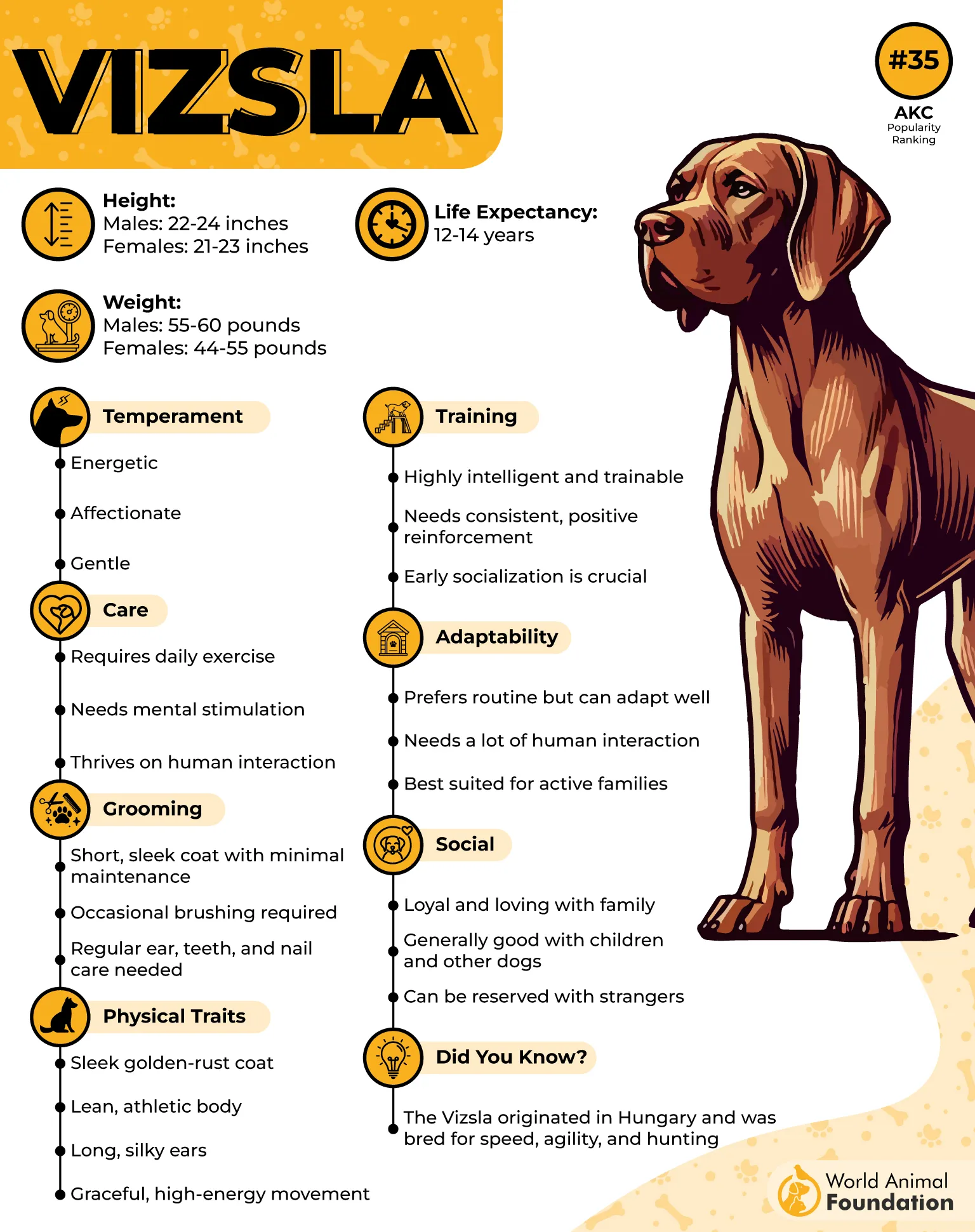
These dogs are intelligent and curious, and if they’re not kept busy, they can get into trouble. Puzzle toys, interactive feeders, or even hiding treats around the house can keep their minds engaged while you’re away. It’s about helping them focus on something that keeps their anxiety at bay.
What makes the Vizsla even more sensitive to separation anxiety is their highly social nature. They often don’t enjoy being left alone at all, whether it’s with another dog or not. While they may get along well with other pets, their real attachment is to their human family. If you’re considering adopting a Vizsla, make sure you’re prepared for a dog that seeks constant companionship.
7. Labrador Retriever

Labrador Retrievers are among the most popular dog breeds in the world, known for their friendly nature, intelligence, and love of companionship. However, despite their easygoing personality, these lovable dogs can also experience separation anxiety. Labradors are extremely social and thrive in environments where they have constant interaction with their family members.
They’re not the kind of dogs who are content just hanging out on their own. In fact, leaving them behind can feel like you’re leaving a piece of yourself behind. They are famously loyal, and their attachment to their humans is often so strong that being alone is truly upsetting for them.
These dogs were originally bred for retrieving and outdoor work, and they have an abundance of energy to burn. If you’re not providing regular physical activity, your Labrador may become increasingly restless. They’re likely to find a way to get that energy out, even if it means chewing up your favorite furniture.
Routine also plays a big role in easing the anxiety of Labradors. These dogs love predictability. If a consistent daily schedule is observed—whether it’s meal times, walks, or your departure times—your Labrador will start to feel more secure. The more structured their environment, the less anxious they’ll be.
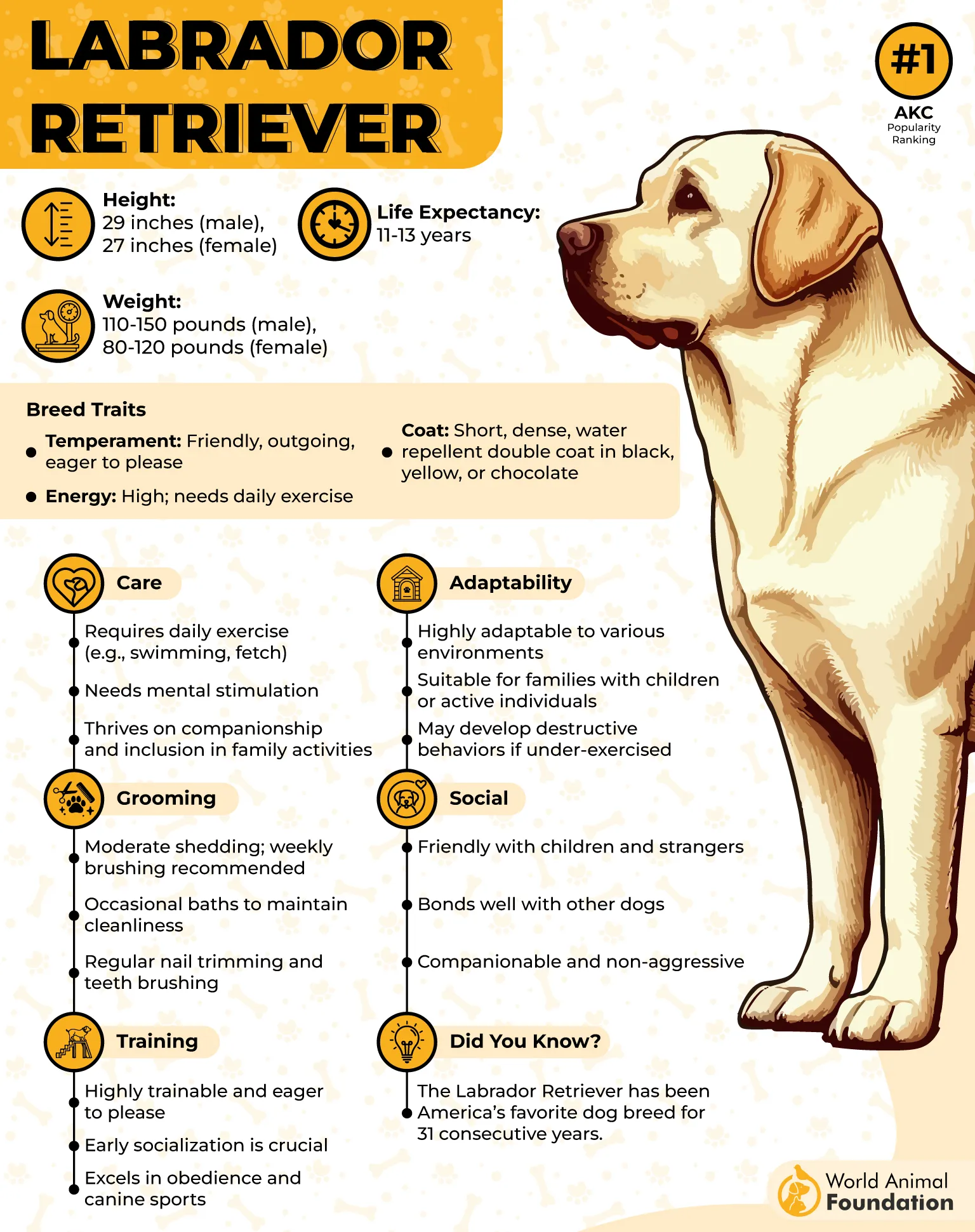
AKC states that Labradors are also known for their ability to learn quickly. This makes them excellent candidates for separation anxiety management techniques like crate training or obedience exercises. If you gradually desensitize them to your absence in a calm and consistent way, they’ll understand that being alone isn’t the end of the world.
Conclusion
Separation anxiety in dogs is a complex and common issue, especially among certain breeds that form strong bonds with their human companions. Breeds such as the Cavalier King Charles Spaniel, Labrador Retriever, German Shepherd, Cocker Spaniel, and Bichon Frise are particularly prone to separation anxiety due to their gentle temperaments, strong attachment to their human family, and roles as companion dogs or working dogs.
These dogs often develop anxiety when left alone for long periods, exhibiting anxiety-related behaviors such as excessive barking, destructive behavior, chewing furniture, excessive salivation, and other problematic habits. Their natural inclination for human interaction and close bonds makes them genetically predisposed to developing separation anxiety, especially when not given enough mental and physical stimulation. Certain highly intelligent breeds like the Border Collie, Australian Shepherd, Shetland Sheepdog, and German Shorthaired Pointer are herding dogs and hunting dogs originally bred to herd livestock or work alongside humans.
This selective breeding has led to high intelligence and excess energy, which, if not channeled through puzzle toys, positive reinforcement techniques, and consistent routines, can trigger stress and anxious behaviors. These active dogs thrive on tasks and interaction, and without sufficient mental stimulation, may exhibit signs of severe separation anxiety. With a proactive approach, furry friends with a natural inclination for bonding can still thrive in loving homes, making it possible to manage even the worst separation anxiety and maintain a harmonious relationship between dogs and their human companions.


